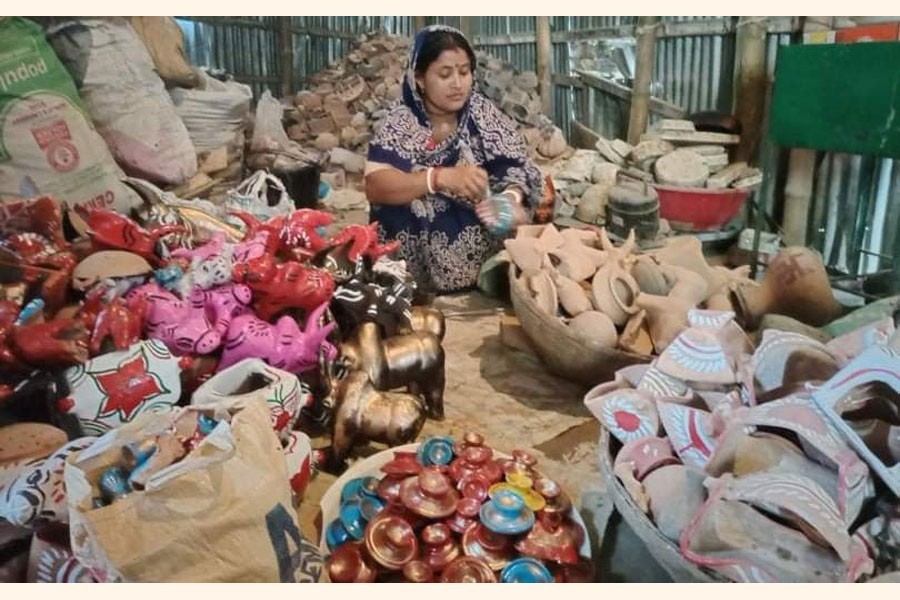The livelihood of potters in the district is threatened by the corona pandemic.
The existence of a section of Bengalis has been associated with pottery and various utensils since ancient times.
With the increase in the use of plastic decorative utensils, the demand for earthenware products has decreased. The pottery industry is now on the verge of extinction due to lack of capital, scarcity of raw materials and low income.
On the other hand the present pandemic has cast a pall of gloom among the potters who maintain heir families by selling earthenwares. Talking to various potters of Palpara village in Amtala union of Sadar upazila of Netrakona on the spot, it is learnt that the artisans involved in pottery do not have any institutional knowledge but they are skilled manpower in this industry. Women are more efficient and hardworking than men. About 50 families of this village have been involved in this traditional industry for ages. In this age of necessary patronage and technological development, the technological excellence of this industry has not been achieved and it is no longer able to compete with the modern utensils.
As a result, many have left their ancestral profession and turned to other occupations. In the earlier days, pottery materials like clay, paint, machinery and fuel were readily available. But at present the artisans are struggling due to the scarcity of these necessary materials. So everyone left this profession in pursuit of livelihood and chose another profession. Only a few families are still making a living by embracing their ancestral traditions.
Potter Nironjan said he used to make pottery items and sell those in different villages. But with the increasing use of plastic decorative utensils, the demand for earthenware products has declined, making it difficult to make a living in the profession.
Several families including potters Mita Rani, Nisha Rani, Dipali Rani, Tulshi Rani, Swarosati Rani and Ruma Rani are still involved in this profession.
They said that since pottery products have different aesthetic value, they have been involved in this profession for generations. They are now making a living by making earthen pots and pans, dishes, sankis, jugs, saras, jugs, ornaments, banks, lamps, dolls, kalkis, idols of various animals and deities as toys.
Swarosati Rani said that they make these toys around a few fairs throughout the year. For example, Poush Mela, Barni Mela, Dol Mela, Ashtami Mela, Chaitra Mela and Baishakhi Mela. They are now living a inhuman life as the fairs have not been able to sell earthen toys due to the epidemic of Covit-19 for the last one year. He has made toys worth around Tk 50,000 ahead of Chaitra Mela and Baishakhi Mela. He is currently suffering from extreme frustration due to the uncertainty of the fair due to the increase in the incidence of corona.
Ruma Rani, wife of late Jhutan Chandra Pal, said she lost her husband about six years ago and her son Liton Chandra Pal about 10 years ago. The son's widow, wife and granddaughter make their living by making pottery and toys. He has taken a loan of Tk 50,000 from an NGO to procure raw materials for making utensils and firewood as he does not have his own capital. He has to pay Tk 1,350 per week in installments.
Elderly Ruma Rani said that in the crisis of Corona, she has lost her way to run the family by paying the NGO installments. She said it would be difficult to retain this traditional Bengali art without government patronage. Future generations will read in books only the stories of traditional Bengali pottery.


